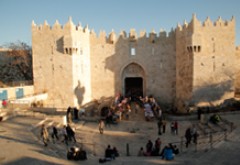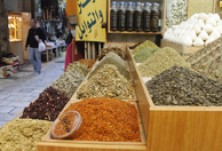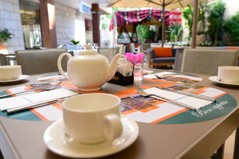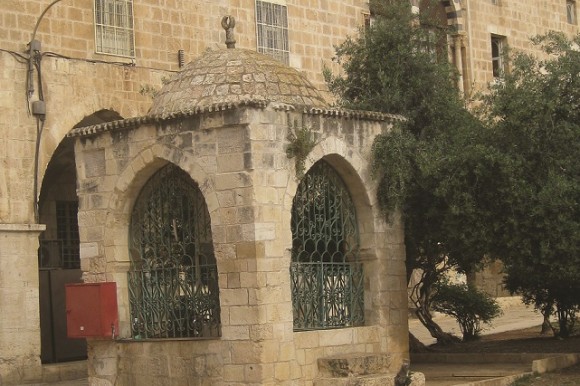After visiting the Sisters of Zion Monastery pool, walk towards the street leading to Bab al-Ghawanima (across the street from the Monastery entrance), one of al-Aqsa Mosque’s gates, where you can access Sabil Ibrahim al-Rumi, after entering Bab al-Ghawanima and walking 25 meters. The Sabil is located next to Bab al-Nazir, one of al-Aqsa Mosque’s gates.
Names of the Sabil and Description of its Architecture
The Sabil was known as Sabil al-Basiri and Sabil Bab al-Nazir, but according to the foundation inscription, the one who renovated it was Ibrahim al-Rumi in the Mamluk era, during the reign of Sultan al-Ashraf Sayf al-Din Barsbai, Eypt’s 9th Mamluk sultan. The Sabil is built over a dome covering a large well carved in rock. The sabil is a free standing structure not attached to any adjacent building. The Sabil caters for people arriving from Bab al-Nazir and Bab al-Ghawanima. Its architecture is simple, comprising a single square chamber with a shallow dome above it. The east wall has a door leading inside the chamber and the other three walls have a window each, with water troughs for drinking. The drinking troughs were fed from the water well underneath, from where water was lifted and poured directly into them. Visitors to the Mosque drank from these troughs using tin cups.
Sabil’s Importance
The importance of this Sabil stems from the fact that it is one of the few Sabils which belong to three-window style. The building is simple but well-constructed, using dressed stone. There is a resemblance in planning and form between this Sabil and Sabil Bab al-Maghariba.
Conditions for Use of the Sabil
It is noteworthy that the Sabil founder restricted its use to the poor and destitute and prevented use by water providers, or transporting water from it in leather containers, indicating that he refused trading in water. This is an unusual condition in water sources like religiously endowed Sabils. Normally, water use is unrestricted in most cases.








